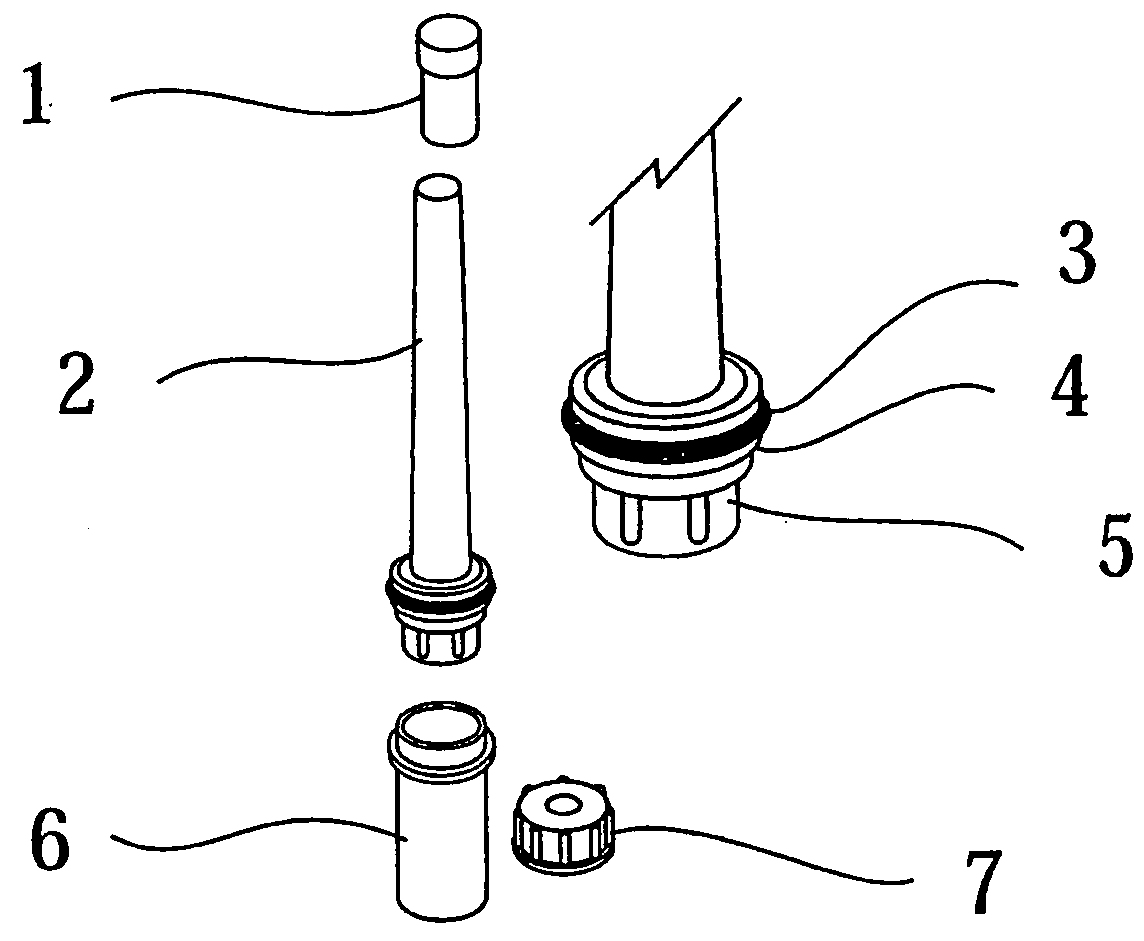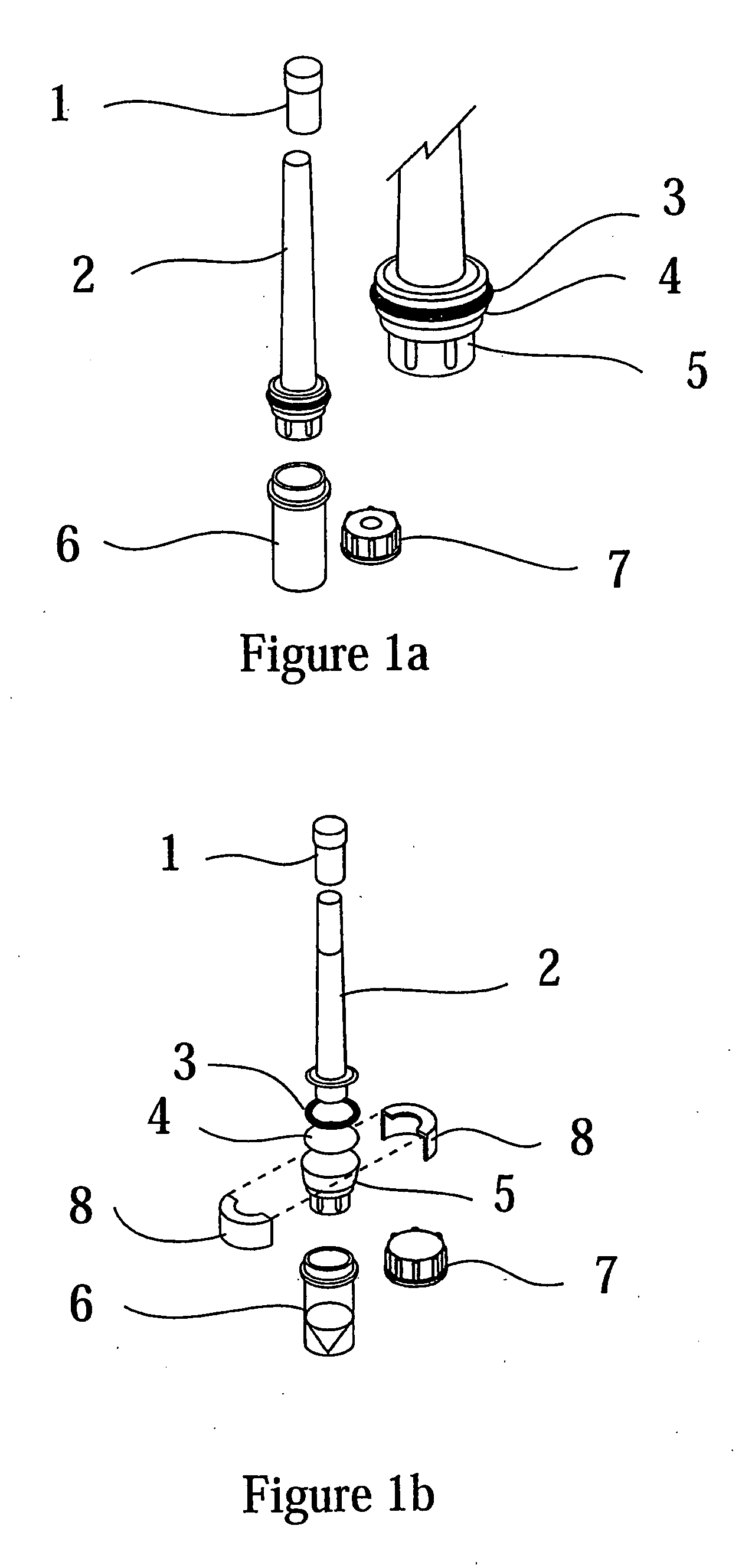Isolation of RNA and DNA from a biological sample
a biological sample and dna technology, applied in the field of molecular biology, can solve the problems of not providing a means of isolating dna and rna, high risk of contamination of samples with foreign nucleic acids or undesirable proteins,
- Summary
- Abstract
- Description
- Claims
- Application Information
AI Technical Summary
Benefits of technology
Problems solved by technology
Method used
Image
Examples
example 1
Simultaneous RNA and Genomic DNA Purification Using Centrifugal Devices
[0062]An overnight culture of Pseudomonas Pseudoalcaligenes was harvested by centrifugation. The bacterial pellet was resuspended in Tris-EDTA (TE) buffer with lysozyme (1 mg / ml). After an incubation of 5 minutes, lysis buffer (3 M GuSCN, 0.01 M TRIS-HCl pH 7.6, 0.035 M EDTA) with 1% β-mercaptoethanol was added and the bacterial lysate was centrifuged. The supernatant was transferred to a new tube and 100% ethanol was added to the lysate.
[0063]The clarified lysate mixture, comprising 1×109 bacteria, was loaded onto centrifugal devices comprising a single MCE membrane (Millipore Corporation, Billerica, Mass.). The device was centrifuged and the filtrate was loaded onto a centrifugal device with a single glass fiber membrane with a nominal pore size of 0.7 microns (APFF) (Millipore Corporation, Billerica, Mass.). The latter device was centrifuged and the filtrate was discarded. Both the MCE membrane and glass fiber...
example 2
Simultaneous RNA and Genomic DNA Purification from Prokaryotic Cells Using Stacked Filter Plates
[0065]An overnight culture of Pseudomonas Pseudoalcaligenes was harvested by centrifugation. The bacterial pellet was resuspended in TE buffer with lysozyme (1 mg / ml). After an incubation of 5 minutes, lysis buffer (as described in Example 1) with 1% β-mercaptoethanol was added and the bacterial lysate was centrifuged. The clarified supernatant was transferred to a new tube and ethanol was added to a final concentration of 35% to the lysate.
[0066]This mixture was loaded onto a stack of 96-well filter plates with a MCE filter plate on top and a glass fiber filter plate on the bottom so that the mixture contacted the MCE filter plate first. The clarified supernatant comprising 1 to 5×108 lysed bacteria was loaded in each well. The stack of filter plates was centrifuged and the filtrate was discarded. Wash buffer 1 (as described in Example 1) was added to each well and plates were centrifuge...
example 3
Simultaneous RNA and Genomic DNA Purification from Eukaryotic Cells Using Stacked Filter Plates
[0068]3T3 NIH fibroblasts were trypsinized and pelleted. The pellet was resuspended in lysis buffer (as described in Example 1) with 1% β-mercaptoethanol. ETOH was added to a final concentration of 35% to the lysate and the mixture was loaded onto the MCE and glass fiber filter plate stack. 5×105 fibroblasts were loaded per well. The stack of filter plates was centrifuged and the filtrate was discarded. Wash buffer 1 (as described in Example 1) was added to each well and the plates were centrifuged, now as single plates. Two more washes were performed with wash buffer 2 (as described in Example 1).
[0069]Cellular RNA and genomic DNA were eluted with water from respectively the MCE filter plate (FIG. 11a) and glass filter plate (FIG. 11b).
PUM
| Property | Measurement | Unit |
|---|---|---|
| pH | aaaaa | aaaaa |
| pore size | aaaaa | aaaaa |
| pore size | aaaaa | aaaaa |
Abstract
Description
Claims
Application Information
 Login to View More
Login to View More - R&D
- Intellectual Property
- Life Sciences
- Materials
- Tech Scout
- Unparalleled Data Quality
- Higher Quality Content
- 60% Fewer Hallucinations
Browse by: Latest US Patents, China's latest patents, Technical Efficacy Thesaurus, Application Domain, Technology Topic, Popular Technical Reports.
© 2025 PatSnap. All rights reserved.Legal|Privacy policy|Modern Slavery Act Transparency Statement|Sitemap|About US| Contact US: help@patsnap.com



